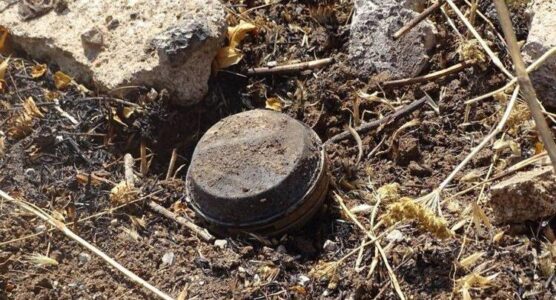
Islamic State mines killed truffle hunters in the Syrian desert
With this year’s abundant rainy season, truffle harvesters are venturing into the desert despite the danger of land mines and other ordnance planted by the Islamic State in the Syrian desert in the countryside of Hama, Deir ez-Zor, Raqqa, Homs, Abu Kamal and al-Mayadin.
Syria’a economic collapse, rampant poverty and unemployment forced Ali al-Hussein, 50, to take the risk with his wife and three children in the desert in Deir ez-Zor.
“I need money for an emergency surgery for my mother, who suffers from heart problems,” Hussein told Al-Monitor.
Searching for high-priced truffles has become the main source of livelihood for many Syrian households. But they’re getting scarcer, Khalaf Hassan, 40, told Al-Monitor.
“Searching for truffles is a dangerous venture. Some of the vehicles carrying 30 workers or more could hit a land mine and blow up — a massacre,” said, adding that his brother died that way.
Sabri Khayyam, a man in his 50s from the city of Raqqa, knows the danger of land mines all too well.
“I hit a mine and lost a leg last year,” he told Al-Monitor. “I went to collect truffles with a group of workers. Our vehicle hit a land mine in the Raqqa countryside. I was injured, but my brother and cousin lost their lives.”
The state SANA news agency reported in February that five people, including two children, were killed by land mines in two separate incidents in al-Rahjan, north of Salamiyeh in Hama province, and in the village of Kulaib al-Thawr in the eastern countryside of Salamiyah.
According to the Syrian Observatory for Human Rights’ statistics for 2021, 241 civilians were killed, including 114 children and 19 women, in such explosions throughout Syria. Another 128 civilians including 60 children and 27 women were wounded, some critically.
Out of the 241 civilians killed by mines in 2021, the war monitor said 49 of them, including seven children and 13 women, were killed while searching for truffles. Most of the deaths came on March 7, 2021, in Wadi al-Atheeb area, east of Hama, where two land mines exploded and killed 18 people, including 10 women, and wounded six others.
Speaking to Al-Monitor, Mustafa al-Saleh, director of de-mining operations for the Roj Mine Control Organization (a local nongovernmental organization working in areas under the control of the Syrian Democratic Forces), accused IS operatives of planting land mines that resemble rocks and stones in the countryside of Raqqa and Deir ez-Zor and even inside homes, along roads and in the desert.
Saleh added that since its establishment in 2016, his organization has destroyed more than 4,000 pieces of ordnance left by IS since the liberation of the city of Raqqa.
In December 2021, the Syrian Network for Human Rights shared a report by the International Campaign to Ban Land mines stating that Syria recorded the world’s highest count of victims of land mines in 2020, with 2,729 people killed and wounded out of 7,073 around the world. The report said that 80% of the victims are civilians.
Between March 2021 and the beginning of January, the network documented the killing of at least 2,773 civilians, including 672 children and 292 women, eight paramedics, six Civil Defense members and nine media personnel.
“The Roj Mine Control Organization’s teams have removed thousands of mines left by IS in the areas under SDF control, with the support of the international coalition and the United States in the cities of Raqqa, Deir ez-Zor and Hasaka,” Saleh said.
He warned, “The slow de-mining process in SDF-held areas in the countryside of Raqqa and Deir ez-Zor due to the lack of support from international bodies and organizations endangers the lives of thousands of civilians who are returning to their properties and homes.”
Source: SOHR





